Menu
Math Lesson 1.3.2 - Subtraction
Please provide a rating, it takes seconds and helps us to keep this resource free for all to use
Welcome to our Math lesson on Subtraction, this is the second lesson of our suite of math lessons covering the topic of Operations with Numbers and Properties of Operations, you can find links to the other lessons within this tutorial and access additional Math learning resources below this lesson.
Subtraction
Subtraction is a mathematical operation in which we remove a quantity of items from a collection. Subtraction is represented mathematically through the symbol minus (-).
The participants in a subtraction are as follows: the first number (usually the biggest) from which the quantity is subtracted is called minuend; the quantity subtracted is called subtrahend, while the result of subtraction is known as difference.
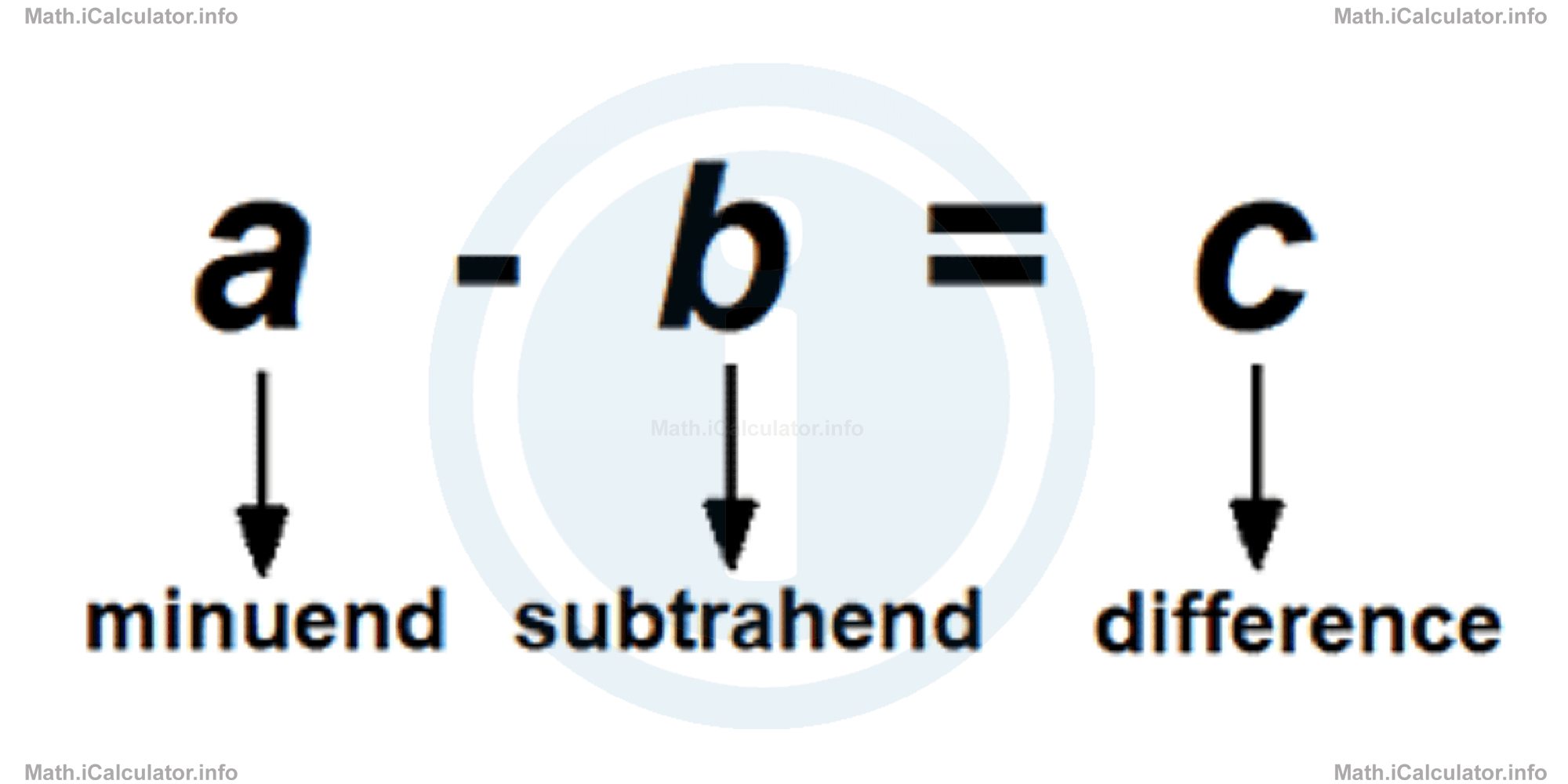
For example, in the subtraction 12 - 5 = 7, 12 is the minuend, 5 is the subtrahend and 7 is the difference of subtraction or simply difference.
Subtraction in the number line is done by moving due left, as shown in the figure below.
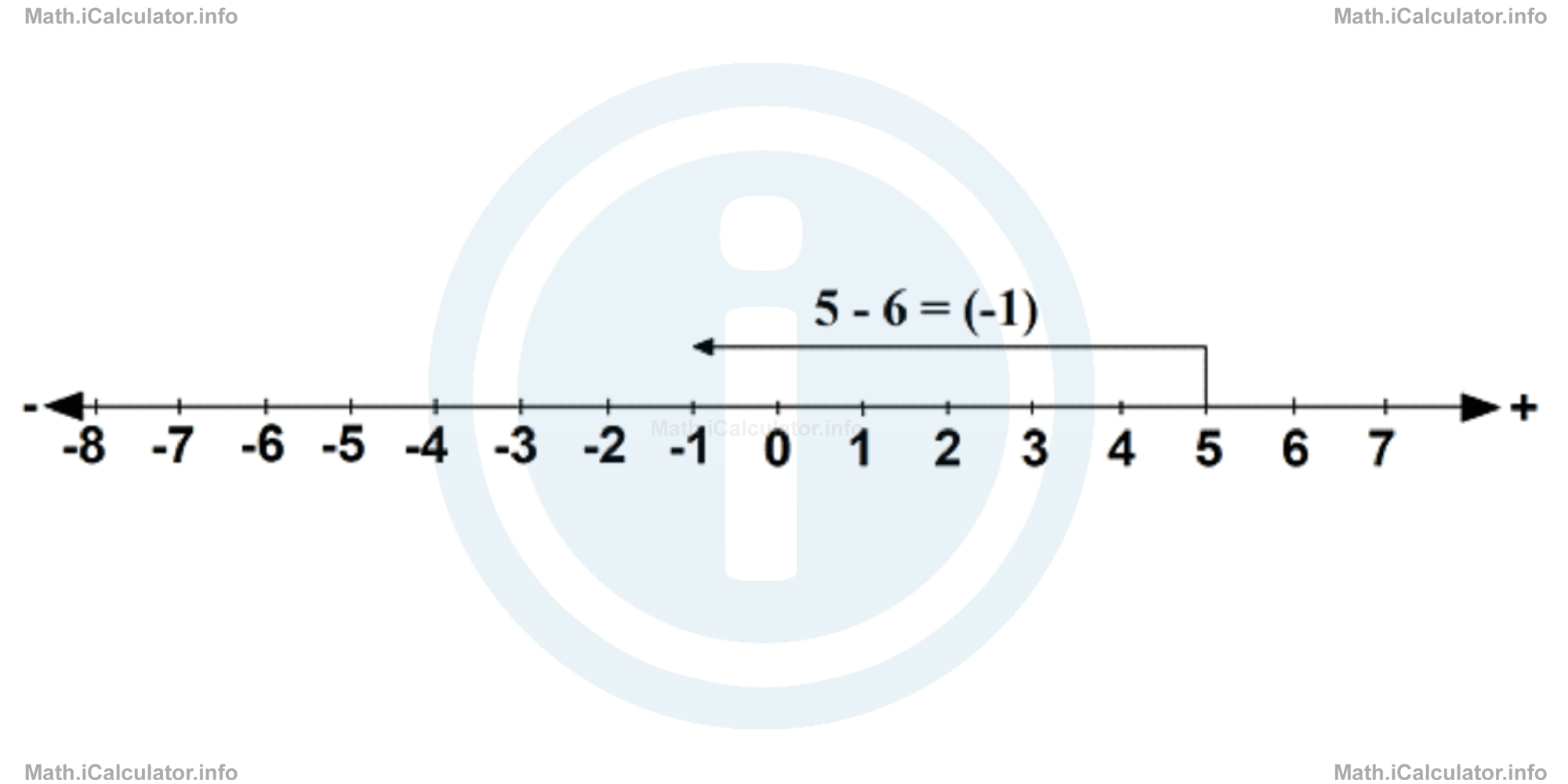
Properties of subtraction
Subtraction does not have the closure property. For example, if we subtract 8 from 5 the result is 5 - 8 = (-3). The difference in this case is not a natural number as the minuend and subtrahend but an integer instead.
Subtraction does not have the commutative property. If we switch the places of minuend and subtrahend, the difference does not remain the same. For example, in the subtraction 14 - 11 = 3, if we write 11 - 14 the result is not 3 anymore but (-3) instead.
Associative property does not exist in subtraction. For example, if we don't try to apply any property in the expression 15 - 4 - 3, we obtain
= 11 - 3
= 8
as operations are done from left to right. If we try to apply the associative properties however, we obtain
= 15 - 1
= 14
which is a wrong result.
The only property of subtraction that is similar to those of addition is the Subtractive Identity Property of Zero, or the subtractive identity element. Based on this property, when we subtract zero from a number, the value of the number remains the same. For example, 15 - 0 = 15; (-21) - 0 = (-21) and so on.
Subtraction as the inverse of addition
Subtraction is commonly considered as the inverse operation of addition. Hence, instead of writing a - b = c, we can write a + (-b) = c as the result is the same in both cases. Therefore, subtraction means addition with the opposite. For example, since 21 - 14 = 7, we can write 21 + (-14) = 7.
Subtracting numbers by regrouping (Borrowing method)
We can subtract numbers in a column in the same way as we do in addition. With this method, when the upper digit is smaller than the lower digit, we borrow one "ten" from the next placeholder on its left. We say a "ten" is borrowed from the left placeholder to make the subtraction possible. Look at the figure below.
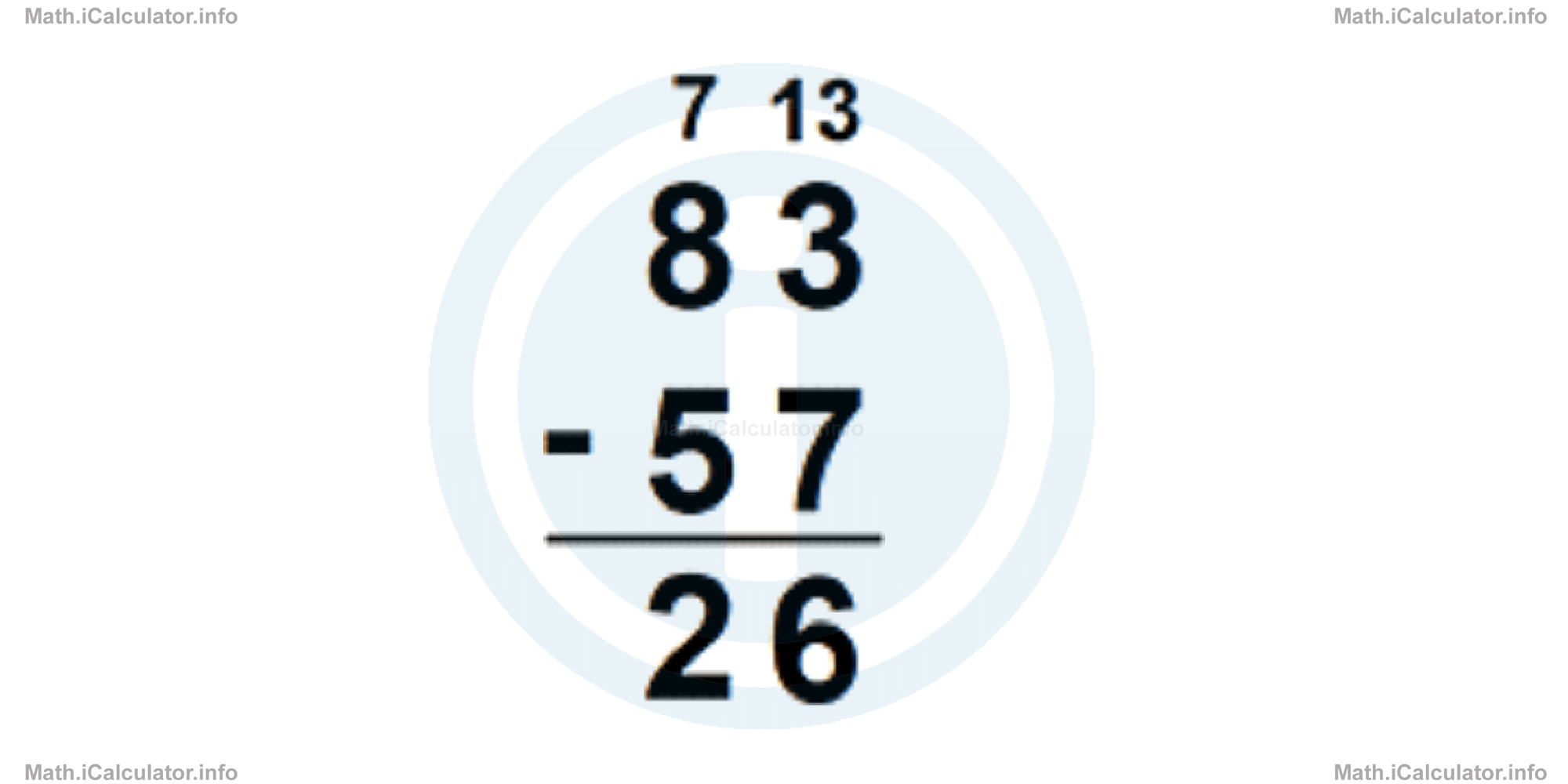
It is impossible (in a set of natural numbers) to subtract 7 from 3. Therefore, we borrow a ten from the tens column. In this way, in the units column now we have 13 - 7 = 6. The first number now has 7 tens as one of them was borrowed to units. Hence, for tens we have 7 - 5 = 2. The difference of 83 and 57 therefore is 26.
Example 3
Calculate the value of the expression:
Solution 3
Addition and subtraction are operations of the same family, so calculations involving these two operations are done from left to right. We have
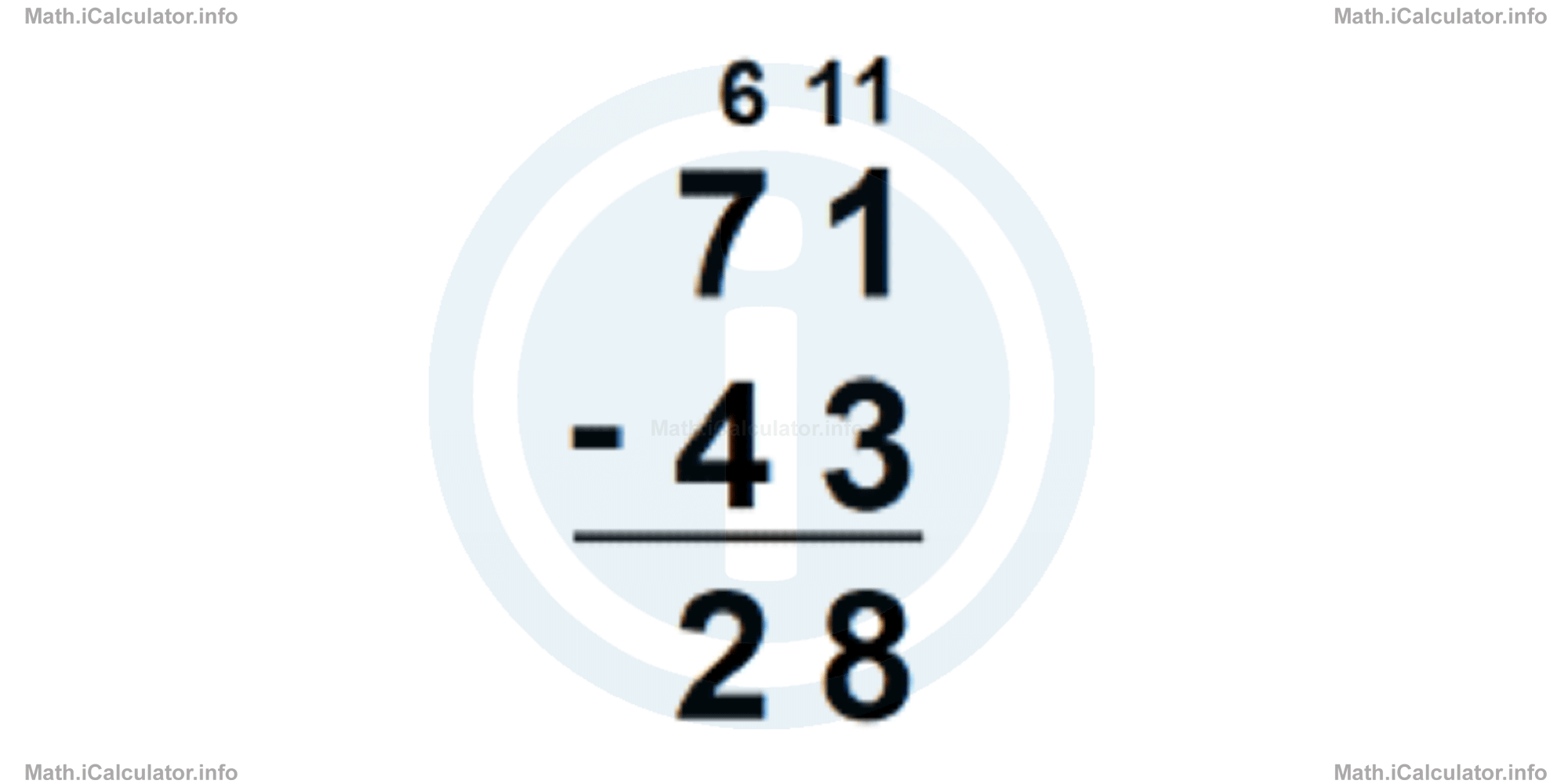
Now, we have
Again, we apply the addition in columns to calculate 28 + 14. We have
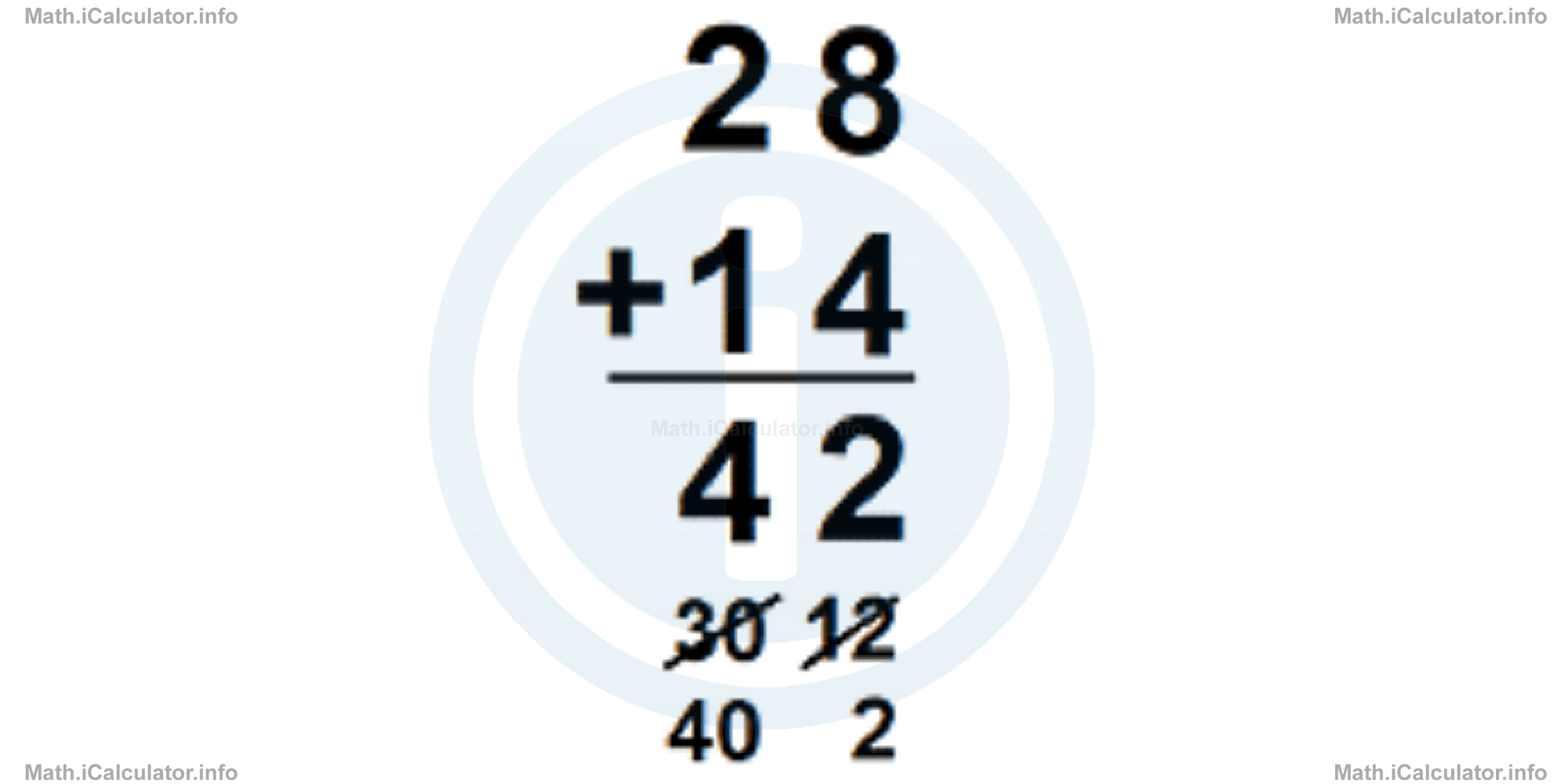
Hence, now we have only 42 - 38 left. Again, using the borrowing method, we have
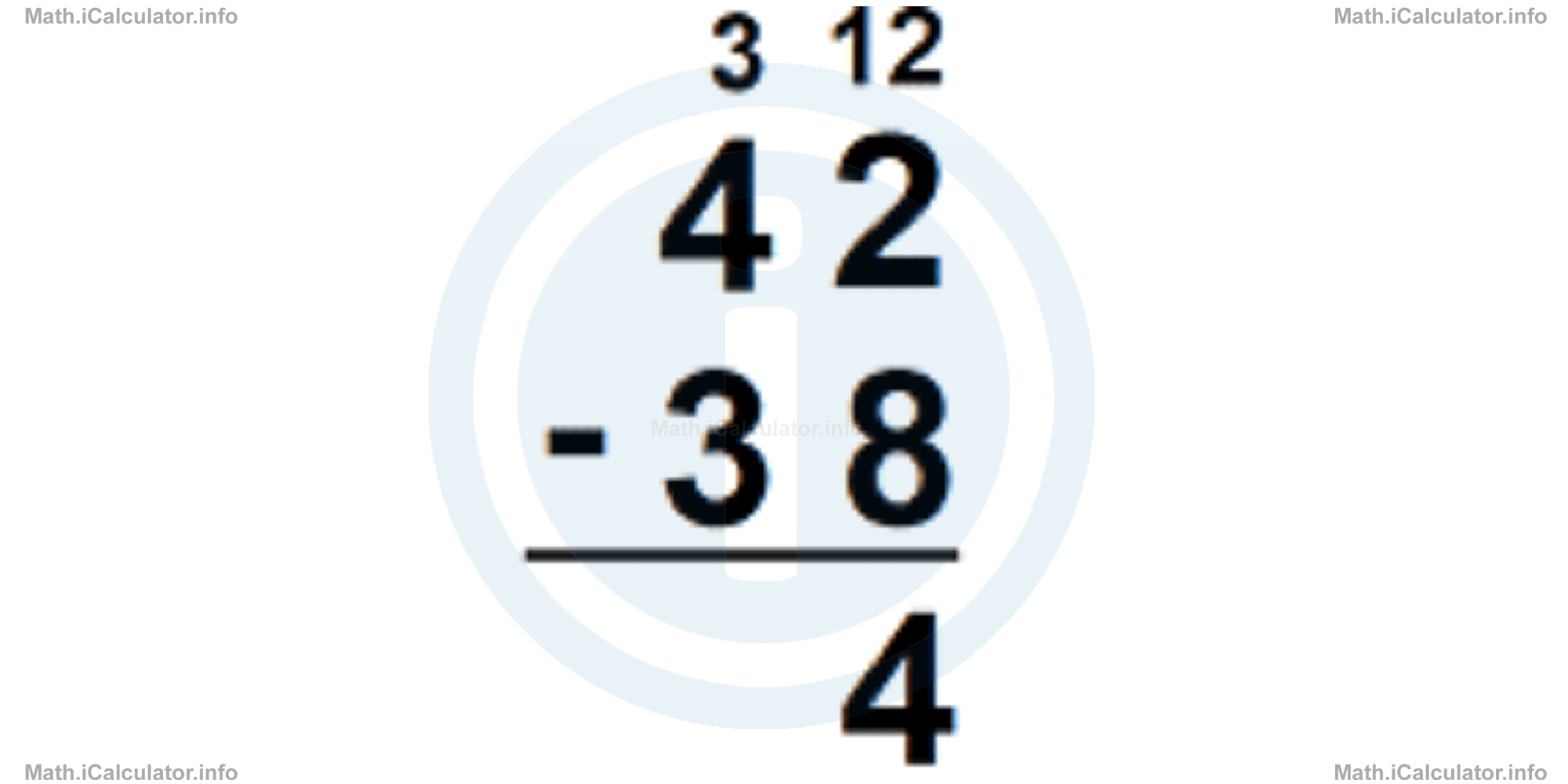
The result of the above expression is therefore 4. Obviously, such simple operations are not necessary to be done in column but we did so only for illustration purpose.
More Operations with Numbers and Properties of Operations Lessons and Learning Resources
Whats next?
Enjoy the "Subtraction" math lesson? People who liked the "Operations with Numbers and Properties of Operations lesson found the following resources useful:
- Subtraction Feedback. Helps other - Leave a rating for this subtraction (see below)
- Arithmetic Math tutorial: Operations with Numbers and Properties of Operations. Read the Operations with Numbers and Properties of Operations math tutorial and build your math knowledge of Arithmetic
- Arithmetic Video tutorial: Operations with Numbers and Properties of Operations. Watch or listen to the Operations with Numbers and Properties of Operations video tutorial, a useful way to help you revise when travelling to and from school/college
- Arithmetic Revision Notes: Operations with Numbers and Properties of Operations. Print the notes so you can revise the key points covered in the math tutorial for Operations with Numbers and Properties of Operations
- Arithmetic Practice Questions: Operations with Numbers and Properties of Operations. Test and improve your knowledge of Operations with Numbers and Properties of Operations with example questins and answers
- Check your calculations for Arithmetic questions with our excellent Arithmetic calculators which contain full equations and calculations clearly displayed line by line. See the Arithmetic Calculators by iCalculator™ below.
- Continuing learning arithmetic - read our next math tutorial: Order of Operations and PEMDAS Rule
Help others Learning Math just like you
Please provide a rating, it takes seconds and helps us to keep this resource free for all to use
We hope you found this Math tutorial "Operations with Numbers and Properties of Operations" useful. If you did it would be great if you could spare the time to rate this math tutorial (simply click on the number of stars that match your assessment of this math learning aide) and/or share on social media, this helps us identify popular tutorials and calculators and expand our free learning resources to support our users around the world have free access to expand their knowledge of math and other disciplines.
Arithmetic Calculators by iCalculator™
- Arithmetic Expressions Calculator
- Decimal Hexadecimal Number Calculator
- Hexadecimal Decimal Number Calculator
- Hindu Arabic To Roman Numbers Converter
- Identifying Factors Number Calculator
- Least Common Multiple And Greatest Common Factor Calculator
- Prime Numbers Identifier
- Greatest Common Divisor Calculator
- Number Format Converter
- Math Powers
- Square Root Calculator
- Exponents Calculator
- Binary Calculator
- Binary To Decimal Calculator
- Common Factors
- Imperial Converter
- Imperial To Metric Converter
- Length Converter
- Metric Converter
- Metric Units Conversion Calculator
- Roman Numerals Converter
- Rounding Numbers Calculator
- Round To Nearest Multiple Calculator
- Sig Fig Calculator
- Unit Rate Calculator
- Weight Conversion Calculator